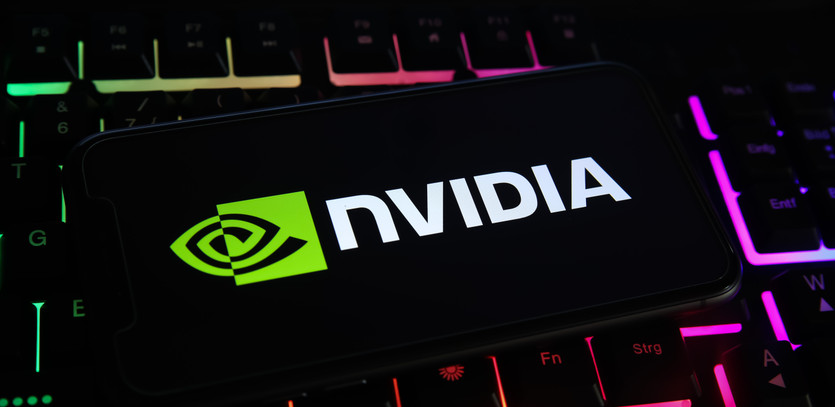NVIDIA, a prominent name in the technology sector, is more than just a leading graphics processor manufacturer. It's a trailblazer in the tech world, known for its:
- High-performance GPUs
- Pioneering role in AI and machine learning
- Influence in the world of robotics, AR, VR, and crypto mining
Established in 1993 by the trio of Jensen Huang, Chris Malachowsky, and Curtis Priem, NVIDIA's roots can be traced back to the creation of the world's first GPU, GeForce 256, in 1999. Today, the company's powerful processors are the backbone of many supercomputers worldwide.
Initially conceived for the PC graphics market and video gaming domain, GPUs have evolved beyond their original scope. Thanks to their capability to perform intricate computational calculations, GPUs, under NVIDIA's creative helm, have emerged as instrumental technology in artificial intelligence (AI), machine learning, autonomous vehicles, robotics, augmented reality (AR), virtual reality (VR), and even cryptocurrency mining.
The NVIDIA Journey: From Inception to a Tech Giant
Established in 1993 by its present-day CEO, Jensen Huang, along with Chris Malachowsky and Curtis Priem, NVIDIA marked a significant milestone with the unveiling of the GeForce 256 in 1999, which was recognized as the globe's inaugural GPU. Within that same year, the company embraced public status via an initial public offering (IPO). Today, NVIDIA's GPUs are key components of numerous top-tier supercomputers worldwide.
Nestled in Santa Clara, California, NVIDIA is officially a member of the technology sector and operates within the competitive semiconductor industry. Its primary competitors comprise of industry giants like Intel Corp. (INTC), Advanced Micro Devices Inc. (AMD), and Xilinx Inc. (XLNX). The fiscal year 2021 saw NVIDIA garner a net income of $4.3 billion on a revenue of $16.7 billion.
NVIDIA's Impact across Various Sectors
Artificial Intelligence and Machine Learning
- NVIDIA's chips serve as the heartbeat of these advanced technologies.
- The complex computational abilities of NVIDIA's GPUs make them ideal for machine learning and AI.
Cryptocurrency Mining
- NVIDIA's GPUs have found a crucial role in cryptocurrency mining.
- Their processing power and speed are instrumental in decoding complex algorithms in the crypto world.
Virtual Reality and Augmented Reality
- NVIDIA's GPUs power VR and AR devices, providing a seamless and immersive experience for users.
Significant Milestones and Challenges
NVIDIA experienced significant developments and challenges in 2022. On May 9, 2022, the company paid a $5.5 million settlement in response to charges by the Securities and Exchange Commission (SEC) alleging that NVIDIA failed to adequately inform its investors about the importance of cryptocurrency mining to its revenue growth.
On February 7, 2022, NVIDIA and SoftBank mutually agreed to halt the proposed acquisition of Arm by NVIDIA, following resistance from antitrust regulators. This proposed merger had attracted scrutiny due to its potential to decrease competition within the chip business.
In January 2022, NVIDIA made two key announcements. First, it was acquiring Bright Computing, a software company specializing in high-performance computing (HPC) systems. Second, it submitted a 28-page report alongside Arm to the U.K.'s Competition and Markets Authority (CMA), detailing their argument for approving the acquisition.
NVIDIA's Key Competitors
NVIDIA operates in the competitive landscape of the semiconductor industry, with key players such as:
- Intel Corp. (INTC)
- Advanced Micro Devices Inc. (AMD)
- Xilinx Inc. (XLNX)
In the fiscal year 2021, NVIDIA reported a net income of $4.3 billion, demonstrating its strong position in the market.
The Ill-fated Acquisition of Arm
On September 13, 2020, NVIDIA had made public its intention to acquire Arm Ltd, a U.K.-based semiconductor and software company specializing in AI. However, the deal ran into regulatory scrutiny, leading to an administrative trial and investigations by multiple authorities over antitrust concerns and potential national security risks.
Despite efforts to gain approval, on February 7, 2022, both SoftBank Group and NVIDIA declared they were withdrawing from the acquisition due to substantial regulatory hurdles.
The Chip Shortage and Its Impact
The latter part of 2020 saw a global semiconductor shortage causing disruptions for consumers and businesses alike. This shortage proved beneficial for NVIDIA, as demand for its chips in gaming consoles and data centers surged during the pandemic. CEO Jensen Huang expressed confidence about the company's supply situation, even amidst the chip shortage.
NVIDIA's Involvement in the Crypto World
Cryptocurrency's rise in popularity brought along with it an increased demand for NVIDIA's GPUs. To better manage the unpredictable cryptocurrency market, NVIDIA took proactive steps:
- Redesigning gaming GPUs to reduce their efficiency for crypto mining
- Introduction of a new chip, Cryptocurrency Mining Processor (CMP), specifically designed for crypto mining
These strategic moves are aimed at stabilizing GPU prices and catering to the specific needs of cryptocurrency miners.
Despite attempts to address the issue by launching GPUs specifically tailored for cryptocurrency mining and limiting the crypto-mining capabilities of certain gaming GPUs, the company faced criticism for how it handled the situation. Its connection with the cryptocurrency market also became a point of contention with regulators, culminating in the Securities and Exchange Commission's (SEC) charge and eventual settlement in May 2022.
NVIDIA’s Role in the Age of AI and Machine Learning
NVIDIA's GPUs have proven instrumental in accelerating AI and machine learning workloads due to their parallel processing capabilities. NVIDIA's deep learning platform has been adopted by numerous companies and research institutions worldwide for developing and deploying AI applications. NVIDIA’s hardware, combined with its software stack, provides an integrated platform for training neural networks, inferencing, and simulating these models.
The company’s Tesla and A100 GPUs, in particular, have been incorporated into many of the world's most powerful supercomputers. Moreover, its Jetson platform for embedded computing, its DRIVE platform for autonomous vehicles, and its Clara platform for healthcare applications demonstrate the expansive reach of NVIDIA's technology.
NVIDIA's Ventures into Software
Beyond hardware, NVIDIA has been venturing further into software, which is becoming an increasingly important part of their business model. For instance, the company's CUDA software, which allows developers to use NVIDIA's GPUs for general computing tasks beyond graphics processing, has been crucial for the adoption of GPUs in scientific computing and machine learning applications.
In 2020, NVIDIA also announced the launch of the NVIDIA AI platform, a fully optimized, end-to-end software platform for AI workloads. This platform provides developers with software libraries and tools necessary for developing and deploying AI and machine learning applications. It further solidifies NVIDIA's role as a key player in the AI industry.
Another significant software venture is NVIDIA's Omniverse, a platform that allows professionals to collaborate in a shared virtual space, in real-time, using photorealistic, physically accurate simulations. Omniverse has numerous potential applications, from architectural design and robotic simulations to video game development. This platform emphasizes NVIDIA's commitment to the future of work and digital content creation.
Impact on the Automotive Industry
NVIDIA's technology is also having a significant impact on the automotive industry. The company's DRIVE platform combines deep learning, sensor fusion, and surround vision to create a comprehensive toolkit for developing autonomous vehicles. NVIDIA has partnered with major automakers like Mercedes-Benz and Volvo to integrate the DRIVE platform into their future vehicles. The advent of autonomous vehicles could transform transportation, making it safer and more efficient, and NVIDIA is poised to be a major player in this shift.
The Future of NVIDIA
Despite the setbacks from the failed acquisition of Arm and the global chip shortage, NVIDIA continues to thrive. Its GPUs remain highly sought-after products, with emerging technologies like AI, machine learning, and AR/VR continually expanding their applications.
NVIDIA is also well-positioned in the data center market with its A100 GPUs and associated platforms, including the DGX line of AI supercomputers. The company's purchase of Mellanox and Cumulus Networks, coupled with the introduction of the BlueField data processing units (DPUs), underscore NVIDIA's ambitions to transform the architecture of data centers, a move that could potentially reposition NVIDIA from a peripheral to a central player in this market.
In the realm of AI, NVIDIA continues to break new ground. The company's GPUs and associated AI platforms are integral to advancements in machine learning, deep learning, and big data analytics. The company's investment in AI hardware, software, and developer tools promise to keep NVIDIA at the forefront of AI innovation.
In conclusion, NVIDIA’s journey from a specialist in GPU technology to a global leader in AI and machine learning exemplifies the company’s innovative spirit. NVIDIA's influence extends beyond the gaming industry into other sectors, from autonomous driving to healthcare, pointing towards a promising future. The company’s ongoing commitment to research and development, paired with strategic acquisitions, suggest that NVIDIA will continue to be a game-changer in the tech industry and beyond for years to come.





